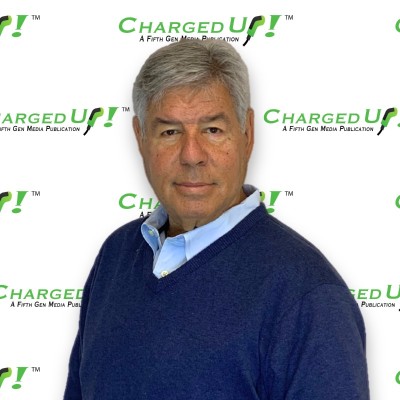Vendors, It’s Time to Rethink How You Sell Amid the Current EV Charging Boom
- Rich Berliner

- Sep 30
- 3 min read

By this point in the fall of 2025, the EV charging map tells a story of steady growth: more than 232,000 public charging ports nationwide, including 58,600 DC fast ports and a visible wave of federally funded NEVI stations. That’s the demand canvas for every charging vendor, manufacturer, and software platform fighting for attention.
Here’s the challenge: the market is loud. Buyers are being bombarded by emails, pitches, demos, and conference invites. Asset managers and developers aren’t short on vendors—they’re short on time. That means the winners won’t be the companies shouting the most; they’ll be the ones implementing the clearest, most consistent systems for reaching their buyers.
The Sell Side Needs Its Own Reset
For years, vendors have framed the EV charging business as a land grab. But 2025 shows us a different reality: landlords and operators aren’t chasing shiny new vendors every quarter. They’re evaluating carefully, they’re risk-managing capital commitments, and they’re choosing partners who can communicate clearly.
That shift puts pressure back on the sell side. If you’re a CPO, hardware maker, or services provider, your next 20% of revenue isn’t hiding in new logos—it’s hiding in the way you run your sales and marketing operations.
“Treat your CRM like a newsroom,” says Keith Reynolds, founder and CEO of PublioSTUDIO™, a go-to-market agency serving the EV space. “Decide who the story is for, publish on a schedule, and make sure every response drops straight onto a salesperson’s calendar. That’s how you create predictable momentum in a market where buyers already have too many options.”
The Noise Problem—and the Opportunity
Yes, procurement teams are fatigued. They’ve heard every pitch. But that’s not necessarily bad news. In fact, it means clarity is now a competitive advantage.
When buyers are overwhelmed, the first vendor to pair a simple offer with an immediate next step—i.e., “let us screen your site,” “let us show you the ROI of expansion,” “let us handle the incentive paperwork”—often wins by default.
That doesn’t happen by accident. It happens when sales, marketing, and operations are wired together, and when content isn’t just lofty “thought leadership” but a functional part of your pipeline.
As the publishing team behind ChargedUp!, we’ll put it bluntly: vendors who still treat marketing as a trade-show booth and a press release are going to get outpaced. The next growth curve belongs to the ones who treat their systems with the same discipline they expect from the sites they’re selling into.
Content as Infrastructure, Not Campaigns
When it's time to implement a marketing strategy, vendors can take a lesson from the very market they’re serving. Just as a property owner doesn’t throw two lonely plugs into a parking lot and call it a charging program, vendors can’t just post sporadic blogs or scatter social posts and expect demand to follow.
Content has to be designed like infrastructure: reliable, connected, and scalable. “Don’t chase noise—ship a system,” Reynolds says. “Name the audience, ship the content, wire it to your RevOps, and inspect the meetings daily.”
That approach isn’t about hype. It’s about turning content into deal flow—ensuring that every video, every case study, every podcast is directly connected to sales activity and measurable revenue impact.
The Advisory to Vendors
Here’s the ChargedUp! view: The seller side of the EV charging market is entering its most competitive phase yet. Growth is still there, but it’s shifting to operators and landlords who are maturing in how they evaluate vendors.
If you’re on the supply side, your job now is to:
Stop over-relying on “net new” lead lists and focus on activating the intent signals already inside your CRM.
Build a content system that meets buyers where they are, week after week, across the seven or so channels they actually use.
Wire your marketing outputs directly into sales workflows so every buyer action leads to a meeting, not a missed email.
That’s not marketing spin—it’s operational discipline. It will separate vendors who close out 2025 scrambling for new deals from those who walk into 2026 with a stable, expandable pipeline.
The Bottom Line
The EV charging industry is at once crowded and full of opportunity. Vendors who align their storytelling with operational follow-through will find themselves in front of the right landlords, developers, and fleets—without having to shout the loudest.
Or, as Reynolds puts it: “When content, RevOps, and sales are wired together, your pipeline becomes a leading indicator—not a lagging report.”
For vendors, that’s the real takeaway. Stop chasing noise. Start shipping systems.
About Us
ChargedUp! is one of the most widely read publications in the EV charging space. Our approach is to take topics that are of interest to everyone and mention companies that provide best-in-class approaches.
To discuss including your products or services, contact us at info@chargeduppro.com. At ChargedUp!, we are committed to keeping businesses and individuals informed about the evolving EV landscape.
For more updates and insights, subscribe to our newsletter at chargeduppro.com.






Comments